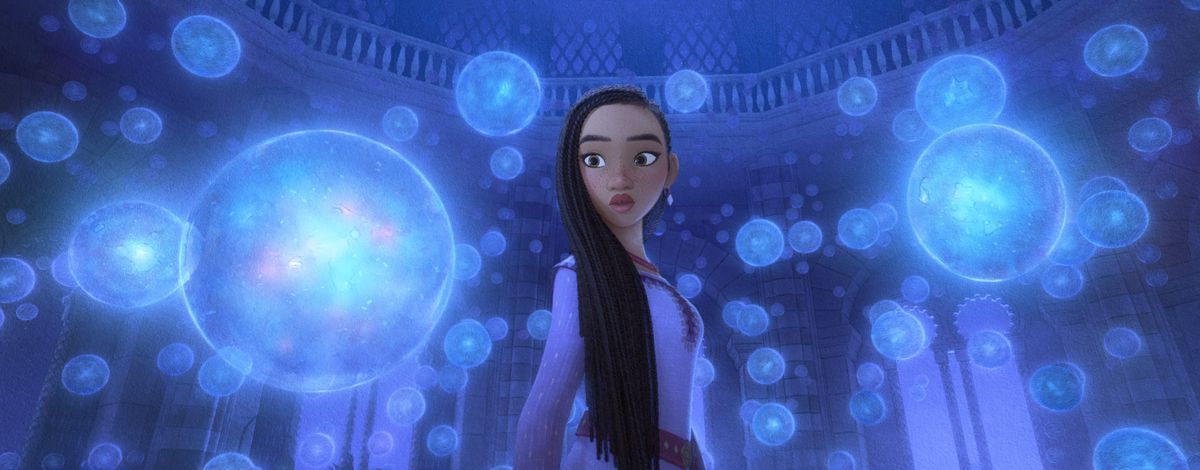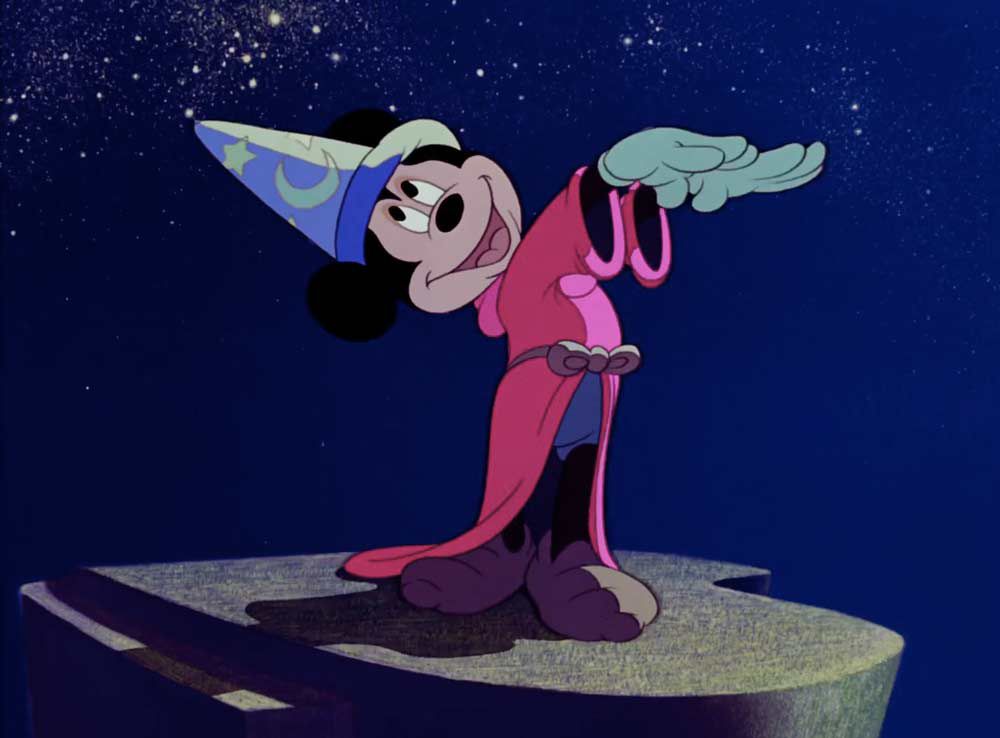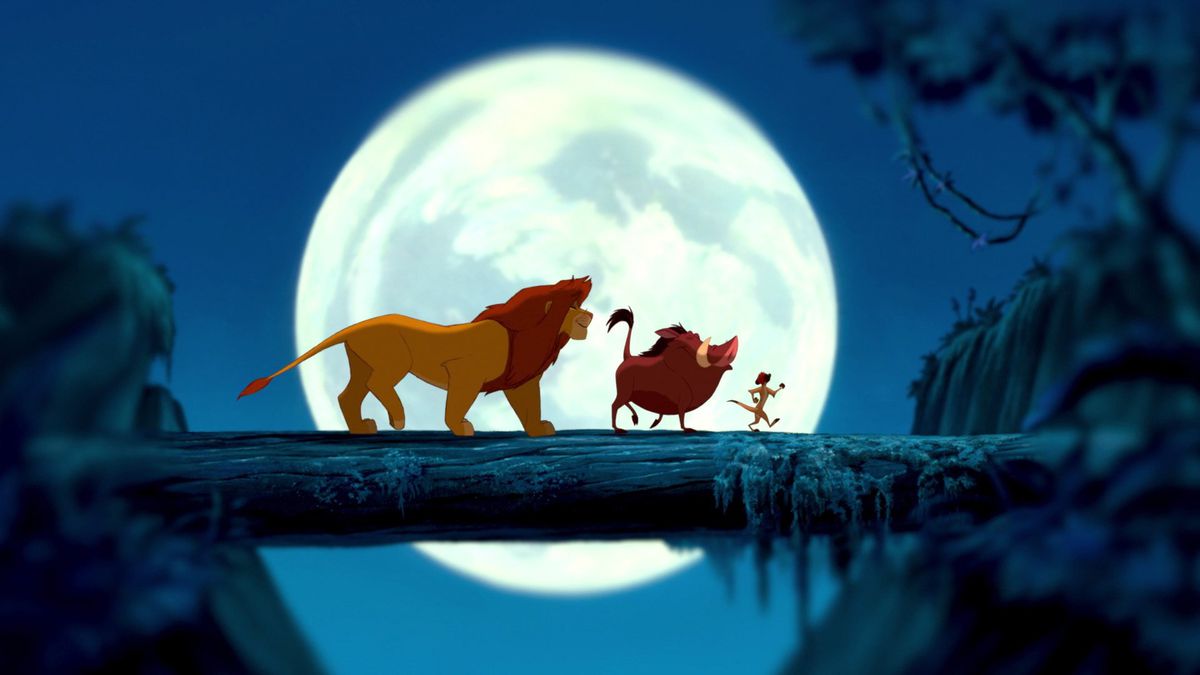Walt Disney Animation’s newest movie, Wish, is the culmination of the studio’s celebration of its own centennial. That project stretched throughout 2023, through projects like the short Once Upon a Studio, specialized merchandise drops centered around each decade the company has been around, and the rebrand of the iconic Disney castle logo. But Wish leans so hard on celebrating the better Disney films that came before it that it doesn’t have much identity of its own. It’s openly a nostalgia-fest, pretty much on par with the other ways the company celebrated its 100-year anniversary.
In 2023, Disney drilled in harder than ever on looking admiringly at its own history. And why shouldn’t it? The company has a full century of beloved movies, characters, and storytelling to mine for big emotion. Even people who’ve outgrown Disney probably still have residual fondness for at least one of the animated movies they watched in their youth. But nostalgia-bait isn’t limited to Disney’s big birthday celebration: It’s basically what the company has been selling for decades now.
While living in and echoing its own past has been profitable for Disney, it isn’t sustainable. And ultimately, harping so hard on its own glory days is pretty antithetical to Disney’s legacy. In order to move forward, it needs to shed the nostalgia — or at least not make it the company’s primary selling point.
Nostalgia is safe
Image: Walt Disney Pictures
From a moneymaking standpoint, it’s easy to see why Disney sticks to legacy-linked projects: They’re all but guaranteed to make bank. Disney’s live-action remakes and sequels consistently get mixed to poor reviews, but they make hundreds of millions of dollars. People will pay to see their faves on screens again, or to try to share their happy childhood memories with their own children.
At least, they will until they get tired of the diminished returns. The live-action remakes might make a lot of money in the short run, but all they’re really doing is reiterating what Disney has done in the past, without meaningfully adding to the original movies’ legacy.
Remember the Disney sequel era? When Disney pumped out cheap direct-to-home-video titles based on every beloved Disney movie from The Fox and the Hound to The Lion King? Disney tries not to. After John Lasseter took over as Disney’s chief creative officer in 2006, he canned the whole DTV department a year later, reportedly denouncing the way cheaply made sequels diminished the Disney brand. Even though Disney loves to celebrate its past, the studio rarely references this era.
Even with a much higher budget and flashier visuals, the live-action remake fad Disney has been riding for the past decade is still contributing to the feeling of nostalgia oversaturation. And the studio’s many spinoffs and reboots don’t help, either. Some of these legacy projects have been good, but even so, the sheer volume of them just doesn’t seem built to last.

Image: Disney
One of the most recent Disney live-action projects announced is a rendition of 2016’s animated hit Moana — a great movie that hasn’t even really had a chance to build its own legacy. The kids who watched it when it first came out are mostly still kids. But Disney is now assuming that anything it makes will have an instant legacy, without actually letting the nostalgia naturally brew on its own.
Disney’s brand management of Star Wars, Marvel, Fox, the Muppets, and a host of other properties only emphasizes this oversaturation. The Disney empire stretches far and wide these days, and characters like Baby Yoda and Tony Stark sit alongside Mickey Mouse and Cinderella in theme parks, on Disney Plus promotional material, and on Bob Iger’s X header. Disney plays up “Disney Magic” as part of its brand. But when every major franchise in America is lumped together as Disney magic, what’s left?
Innovation is Disney’s real legacy

Image: Walt Disney Productions
Over the past 100 years, Disney has taken some big, risky swings, and has fumbled many, many times. From the dark and dreary Black Cauldron, which almost bankrupted the studio in 1985, to the off-kilter adventure movies of the early 2000s, the studio’s mold-breaking passion projects have often been megaflops. But at the same time, some of the company’s most memorable movies have stemmed from these risks.
The original 1940 Fantasia was one of Walt Disney’s most ambitious passion projects turned box-office failures, but the Sorcerer Mickey short is as iconic as the mouse himself. Lilo & Stitch was so damn weird that the filmmakers basically hid it from the rest of the company; it ended up making back more than three times its budget, and more importantly, turning Stitch into one of the studio’s most memorable characters. And even The Little Mermaid, the film that kickstarted the Disney Renaissance, was a risk; a big Broadway-style musical of its type just hadn’t been done in animation before.

Image: Disney
After all, Walt Disney himself famously pushed for progress and innovation, especially in the studio’s creative endeavors, even when that translated into poor financial decisions. What’s made his studio so special over the past century is how it’s looked forward, trying new things even in the face of failure and taking chances that other production houses couldn’t afford or risk. The company’s biggest legacy isn’t the princesses, the theme parks, or even Mickey Mouse: It’s how all those elements started out as daring projects that no one else was doing.
And yet Disney and its fans apparently keep forgetting that, and keep clinging to the past with such ardor that it does their idol’s legacy a disservice.
There’s a time and place for the past
Nostalgia isn’t a bad thing, nor is it entirely at odds with Walt Disney. Even in his quest for innovation, Walt was a nostalgic guy who idealized “the good old days,” to the point where he modeled the entrances of his theme parks after how his hometown looked at the turn of the 20th century. I, certainly, am not immune to Disney nostalgia. I love Disney. I have multiple Disney-themed plushies. I teared up when I watched Once Upon a Studio. I launched an entire yearlong content package so I could celebrate Disney.
But nostalgia is a potent ingredient, and it works best in the Disney recipe for success when it’s on the side: in celebratory shorts, theme-park parades, and collectible merchandise. Not when it’s the main offering. For most of the past century, Walt Disney Studios was a movie studio first, and a storefront, streaming service, and theme-park empire second.
It feels like that balance has shifted over the last decade. And if Disney wants to last another century, and make things that actually spark new nostalgia down the line, it should go back to embracing fresh, different ideas.

Image: Disney
Hardcore Disney fans aren’t always keen on new things. They cry out for a return to their favorites, the memory of watching a Disney movie for the first time. Maybe that means demanding animated Disney movies have proper villains again. Maybe it means asking for more musicals — or fewer of them. Maybe it’s lamenting the loss of traditional 2D animation. Maybe it’s specifically missing the animated musical sequences of the Disney Renaissance. There are even people who yearn for a return to the animal-focused movies of the 1970s. Whatever that Disney draw is, it’s different for every single person.
And because Disney fans have so many separate, individualized desires, it’s impossible for the company to focus on meeting every single one of them. Besides, more often than not, even though people cry out for the good old days, what they’re really missing is the feeling of discovering something new — that first viewing of a movie that will become a lasting favorite. Trying to check off all the items on a checklist that doesn’t even really describe what people want… that doesn’t make good movies. It barely makes tolerable ones.
With 100 years of creative life under its belt, Walt Disney Studios has a lot to be proud of. But Mickey Mouse didn’t become a staple overnight. Before Mickey was an icon, before the Disney Princess brand was even a thing, before Disney owned a million other entertainment companies, Disney filmmakers were trying daring things, while making a lot of costly mistakes along the way. But each of those mistakes was an opportunity, a legacy of its own that helped usher in the great movies the studio is known for.
That’s not a message that executives and shareholders want to hear. But you don’t get to a hundred-year legacy by playing it safe. You need to have faith and trust in storytelling, in the creative minds behind the great movies, in the power of progress. And a little pixie dust doesn’t hurt, either.

